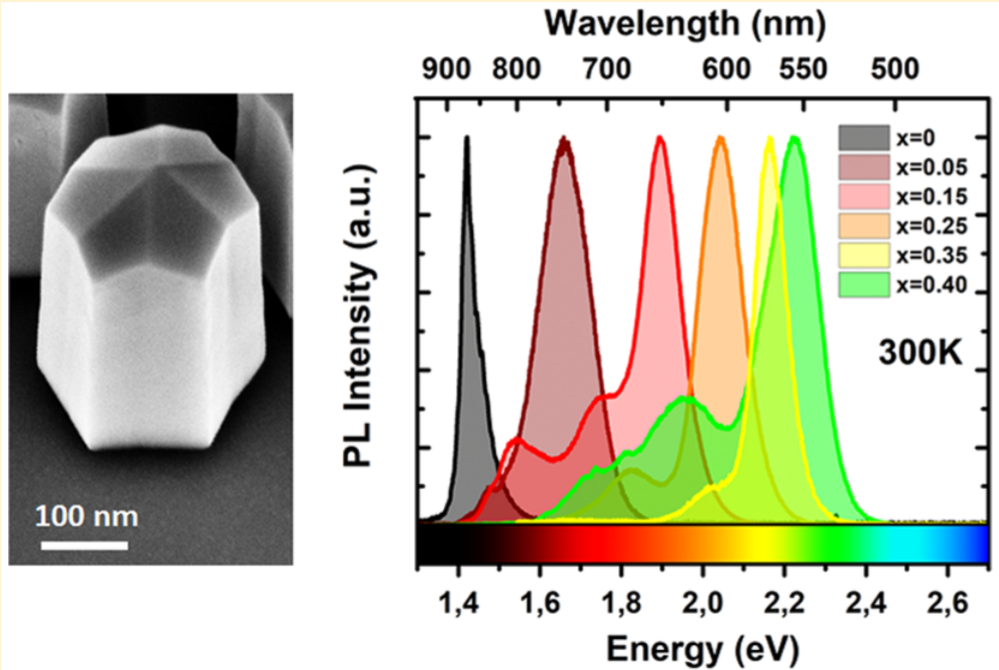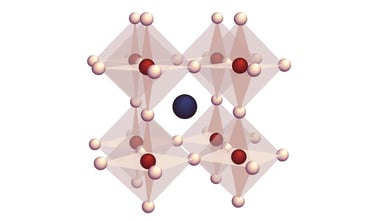However, the systematic efficiency drop in the yellow-green region, also known as the “green gap”, is a fundamental limitation for the LEDs and semiconductor laser devices.
In order to overcome this gap novel materials are needed. Researchers from the TU Eindhoven and AMOLF in Amsterdam have recently developed and investigated a promising new candidate: wurtzite (WZ) AlxIn1−xP nanowires. Their results are summarized in the prestigious journal Nano Letters.
The nanowire geometry, crystal structure and composition were examined using a variety of TEM techniques including HAADF STEM, electron diffraction, and EDS. Photoluminescence and cathodoluminescence (CL) were used to study the optical properties of the materials. The cathodoluminescence measurements, performed in the SPARC, were used to study nanoscale variations in emission due to local changes in composition, both in the lateral dimension as well as along the wire length. The results demonstrate strong room-temperature light emission from the infrared to the green range showing that this material may provide a viable route towards efficient green LED devices.
If you would like to know more about the possibilities of cathodoluminescence for LED characterization and research, make sure to read our application note on bulk and nanostructured Gallium Nitride-based LED materials.
References
[1] Efficient Green Emission from Wurtzite AlxIn1–xP Nanowires L. Gagliano, M. Kruijsse, J. D. D. Schefold, A. Belabbes, M. A. Verheijen, S. Meuret, S. Koelling, A. Polman, F. Bechstedt, J.E.M. Haverkort, and E.P.A.M. Bakkers Nano Letters Article ASAP DOI: 10.1021/acs.nanolett.8b00621
.png)






